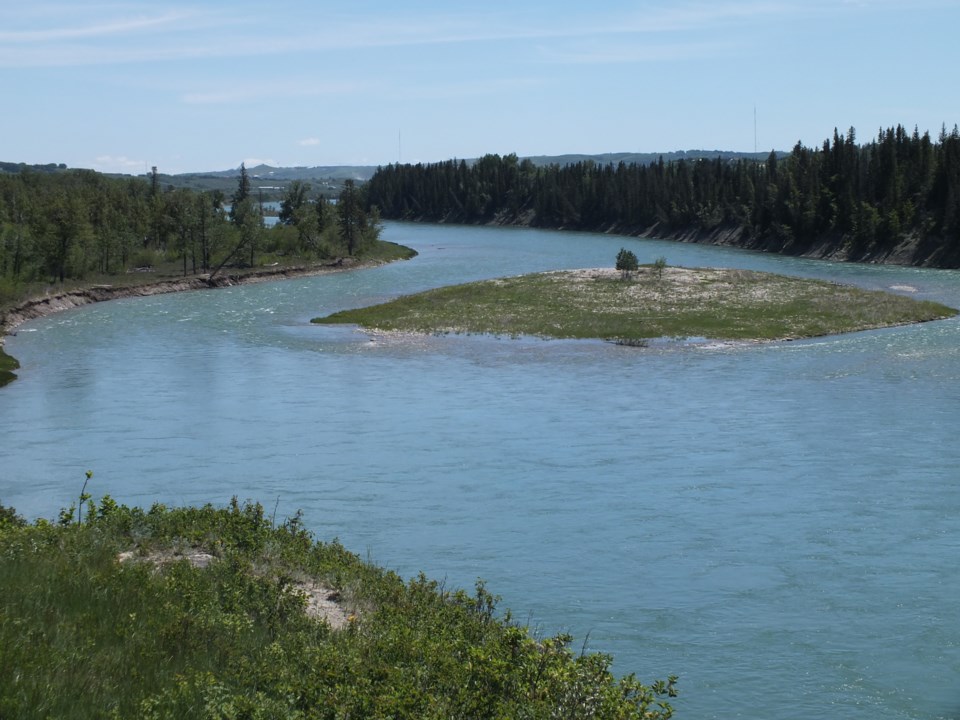Opponents of the provincial government’s controversial four-year consideration of a possible dam on the Bow River east of Cochrane breathed a sigh of relief today as Alberta Environment and Protected Areas announced they have dropped the Glenbow East option in favour of expanding and relocating the Ghost Reservoir upstream of the town.
The Glenbow East option became a lighting rod for dissent and made AEPA a target for lobbyists such as the Glenbow Ranch Park Foundation (GRPF), which sponsored numerous townhalls and letter-writing campaigns highlighting potential environmental damage, risk to Cochrane infrastructure, and the destruction of neighbouring Haskayne Legacy Park.
Foundation CEO Jeromy Farkas, a prime driving force behind the opposition to the dam, was over the moon when the province released its decision Wednesday.
“We're jubilant. Over the past year as we've gone through this process there's been so many sleepless nights, there's been a dark cloud over both of the parks and we know that everyone's going to sleep a lot easier tonight,” he said.
He said much important work was in limbo as the dam issue lingered.
“We have so much that we want to do here. We want to expand the size of the park. We want to grow our services, build more trails, work with Cochran Rotary to build that trail connection into Cochrane . . . there's so much that was put on hold because of the storm clouds of a possible dam,” he said.
“So it's just a huge relief and a big win for advocacy. If it weren't for Cochrane residents speaking up in such a big way about how important these parks were, we could have easily had a different result,” Farkas said.
One of three billion dollar possibilities being studied as potential flood and drought mitigation projects on the drawing board, the Glenbow East option elicited strong reactions from political figures like Cochrane Mayor Jeff Genung, who said he was “baffled” that the province was still even considering it a few months ago.
The AEPA statement said “After reviewing multiple options, the Alberta government has determined that the relocated Ghost Dam option is significantly better than the Glenbow East option due to its lower cost, ability to mitigate future droughts and floods, and fewer social and environmental impacts.”
“The Glenbow East option posed higher risks to downstream communities during construction, including Calgary. Its earthfill dam would also be more susceptible to erosion and failure during large flood events compared to the Relocated Ghost Dam, which is a concrete gravity dam.”
They said based on the data collected in the study, one option, the relocated Ghost Dam is clearly the best choice to move forward with.
In 2013, the southern Alberta flood caused more than $5 billion in damage in Calgary and surrounding communities.
The provincial government will move forward with exploring the relocated Ghost Dam option “because it has a smaller project footprint and fewer overall impacts to the environment, property and infrastructure, while providing comparable water storage to the Glenbow East option.”
Alberta will now move to the next phase of the project. Phase 3 is the engineering and regulatory approval phase, and more information on this work will be shared in 2025.
A May 2017 report by the Bow River Working Group included a recommendation to complete conceptual assessments of three major reservoir options on the Bow River, upstream of Calgary: Relocated Ghost Dam along with an expansion of the existing Ghost Reservoir; Glenbow East, and, a new reservoir between Cochrane and the Bearspaw Dam at the western edge of Calgary.
A new reservoir between Seebe and Mînî Thnî, on Stoney Nakoda Nations reserve land was initially a part of the study but was dropped. No reason has been given by the province.
The potential selection and implementation of a reservoir option on the Bow River upstream of Calgary is being approached in four phases: Conceptual Assessment; Feasibility Study; Engineering and Regulatory Approval Process, and, Procurement, Construction and Commissioning.
In 2021, Alberta began engagement and field studies for Phase 2, the feasibility study. It assessed technical feasibility, while carefully considering a variety of social, environmental, cultural, traditional land use, engineering and economic elements. The final report will be released in early 2025.
An alternatives assessment was also conducted to determine if something other than a new reservoir could provide equivalent flood and drought protection. Options were evaluated, but none provided the water storage necessary to mitigate impacts from both floods and drought, without significant issues related to Treaty rights, environmental impacts and regulatory challenges.
The project will now transition from Alberta Environment and Protected Areas to Alberta Transportation and Economic Corridors for Phase 3.
Along with the Bow River Reservoir, Alberta is also developing the Springbank Off-stream Reservoir to provide protection along the Elbow River in Calgary and other downstream communities as part of an overall flood mitigation system.




